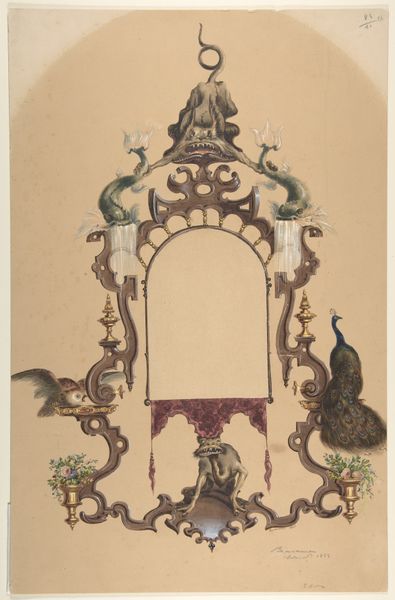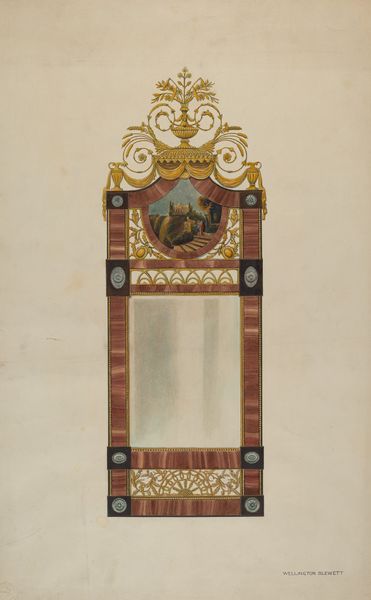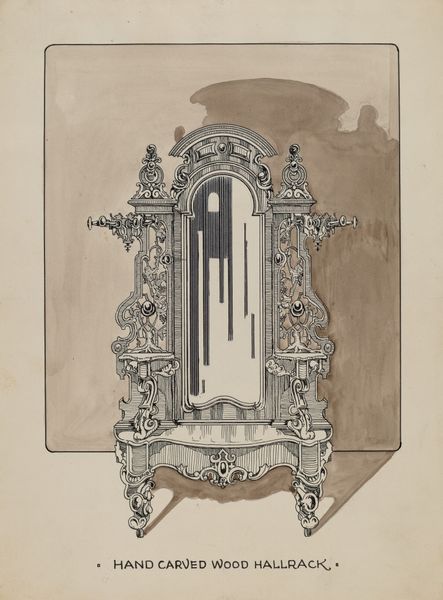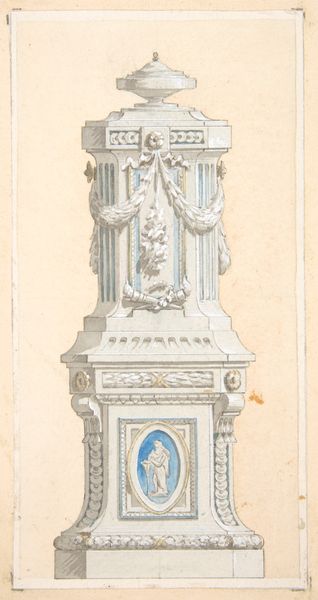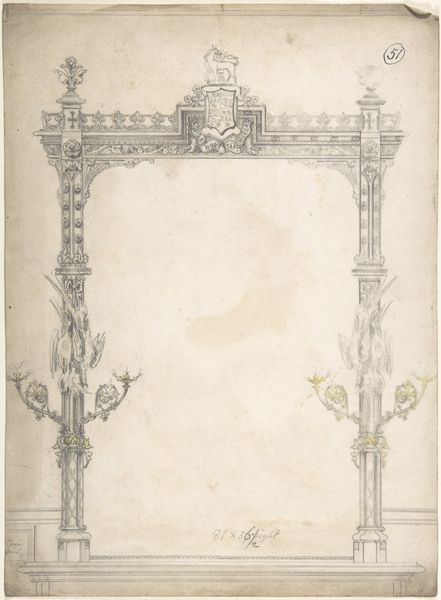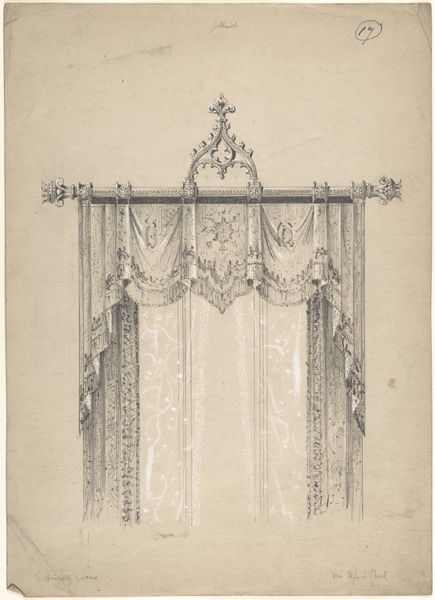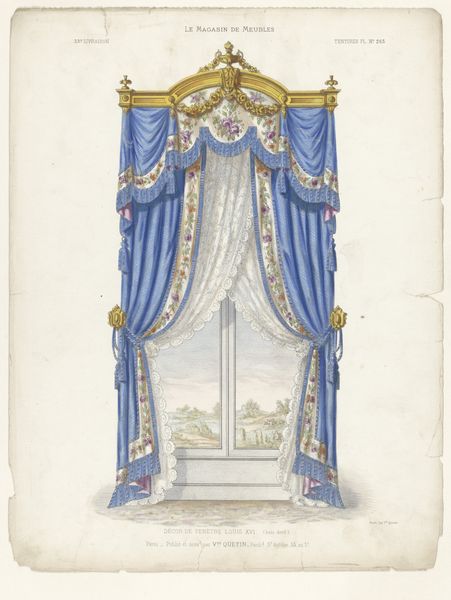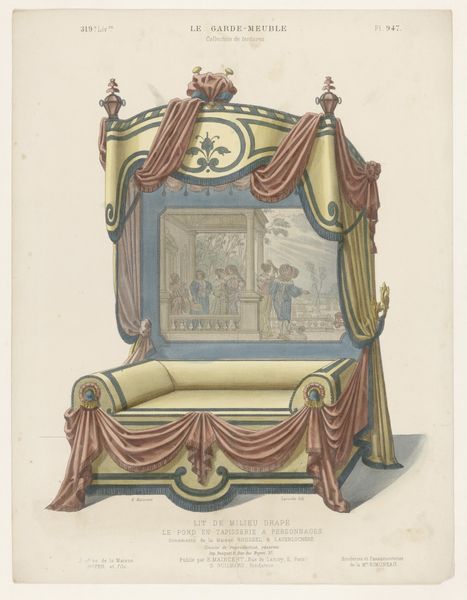![Design for Frame by Edouard [?] Bouvenne](/_next/image?url=https%3A%2F%2Fd2w8kbdekdi1gv.cloudfront.net%2FeyJidWNrZXQiOiAiYXJ0ZXJhLWltYWdlcy1idWNrZXQiLCAia2V5IjogImFydHdvcmtzL2IxZWE4MDBjLTBjNjctNGM2OC1hZjdiLWU4OTRkMWMyZTY2ZS9iMWVhODAwYy0wYzY3LTRjNjgtYWY3Yi1lODk0ZDFjMmU2NmVfZnVsbC5qcGciLCAiZWRpdHMiOiB7InJlc2l6ZSI6IHsid2lkdGgiOiAxOTIwLCAiaGVpZ2h0IjogMTkyMCwgImZpdCI6ICJpbnNpZGUifX19&w=3840&q=75)
drawing
#
drawing
#
decorative-art
#
decorative art
Dimensions: 18 11/16 x 12 5/16 in. (47.4 x 31.2 cm)
Copyright: Public Domain
Curator: Here we have "Design for Frame," a drawing made between 1838 and 1848 by Edouard Bouvenne. It's currently held in the collection of the Metropolitan Museum of Art. Editor: My first impression is opulence, a sense of old-world luxury, perhaps bordering on the fantastical. It's ornate, almost overwhelmingly so, with this odd mix of architectural and organic elements. Curator: Indeed, it's a remarkable example of decorative art, reflecting the lavish tastes prevalent in the 19th century, a period marked by increasing industrial production and a growing bourgeois class eager to display their wealth through elaborate interiors. Editor: Tell me about that figure atop the frame. With the book, and flowing robe, is that supposed to be Moses, maybe? It’s commanding such authority over something as mundane as a frame. What power does he wield here? Curator: Your point hits directly on a trend of the 1800s to return to antiquity and religious history for legitimacy. Using Moses is less about literal worship and more about signaling authority to justify the ruling structures that be. It’s a symbol co-opted. Editor: So the serpentine creatures below – they are less fearsome guardians and more a reflection of the era’s…what? Ambivalence? Luxury propped up on somewhat…shady symbols? Curator: A good analogy. The monstrous serpentine creatures might allude to antiquity with new industrial prowess in execution and technique. They suggest a world where danger is domesticated, a world where beauty serves as both ornament and shield, concealing underlying political forces at work. Editor: Looking closely at the drawing, the use of watercolor is intriguing. The colors feel deliberately chosen to convey this sense of…I don’t know, historical weight? The blues, greens, and golds aren’t merely decorative; they seem to whisper of stained glass and ancient illuminated manuscripts. Curator: Exactly! It showcases the influence of historical revivalism on the decorative arts, mirroring similar trends in architecture and literature. Bouvenne's design would never have been mass-produced due to its high art approach. Editor: Reflecting on it now, the design speaks to a longing for stability in an era of unprecedented change. A literal attempt to frame the world, to give order to the chaos of modernity. Curator: Yes, an assertion of tradition, a very particular type of control, really, at a time of upheaval, where art and design are weaponized for influence.
Comments
No comments
Be the first to comment and join the conversation on the ultimate creative platform.

